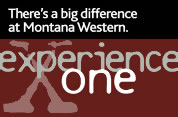|
Honors Program: A pathway to excellence.
HON 301 Catapults and Cathedrals: Latin Engineering and Architecture from Caesar to Leonardo
This course explores the history, aesthetics, and technical developments in Latin society from Ancient Roman times to the Renaissance. Though the emphasis is on technical developments, this course is much more than just a static look at machines and buildings. We will examine the social and cultural history of Ancient Rome and Renaissance Italy, we will study the history of science and technology in the political context of the times, and we will have the opportunity to see and touch these wonders of Latin ingenuity in Italy itself. The class will travel to Venice, Florence, Sienna, Rome and Pompeii on November 3-11, 2008 (block #3).
The first part of the class will be spent familiarizing ourselves with the history of Ancient Rome and Renaissance Italy. We will read and discuss the following books:
The Architecture of the Italian Renaissance, by Peter Murray
Building History - Roman Roads and Aqueducts, by Don Nardo
Engineering in the Ancient World, by J. G. Landels
A Brief History of the Romans, by Mary T. Boatwright
Major Problems In The History Of The Italian Renaissance, by Benjamin Kohl
The second part of the class will take place in Italy, where we will take field trips to structures of historical significance, with the history of science and technology serving as the basis for the itinerary. We will visit the remnants the Roman Empire including the Coliseum, Roman Forum, Domus Aurea, Pantheon, Pompei, and Villa Adriana. We will walk along Roman roads, and marvel at the engineering of aqueducts. We will visit the great architecture and art of the Renaissance. Prepare to witness St. Peter's Basilica, the Sistine Chapel, the Basilica San Marco in Venice the Duomos in Siena and Florence. The influence of Italian visionaries on the history of science, art, and technology, such as Julius Caesar, Giotto, Michelangelo, Brunelleshi, Da Vinci, and Galileo, will be emphasized throughout the trip.
The final part of the class will see students synthesize their readings, discussions, and experiences in Italy by writing a research paper that will focus on a single technical development of their own choosing. For example, this may be a paper describing how Romans constructed the Appian Way, and how Roman roads served to develop and shape the Roman economy. Or, one's research can focus on how the construction of Renaissance Cathedrals affected the identities and cohesion of communities and towns where they were built. Students will also be asked to do short public presentations of their research for the UM Western community at a later date.
This trip is motivated by the educational value to students of experiencing historically significant structures within the context of the history of science and technology. The experience of space, volume, form, and motion cannot be fully appreciated without personal experience. A trip to historically important buildings, archeological sites, and museums affords deeper appreciation and understanding of the early history of European Civilization. In addition, the cultural value of spending time in a foreign country is integral to the learning experience. The experience of differences in customs, language, and food are important components intellectual development in the modern world, and are complementary to the core program of studies.
_____________________________________
Instructor: Dr. Boleslaw Janus
Substitutions:
IT 210 Historical Developments in Industrial Technology
IT 350 Structural Analysis & Construction Technology
ED 426 Multicultural/Global Education Practicum
ART 211 Art History (Not for Art Majors)
HIST 320 History of Central Europe I
HIST 321 History of Central Europe II
HIST 360 Cold War Europe
HIST 380 Modern Europe
HIST 452 European Intellectual History
Time: Fall 2008 Stringer AND Block 3
|

 << back
next>>
<< back
next>>

